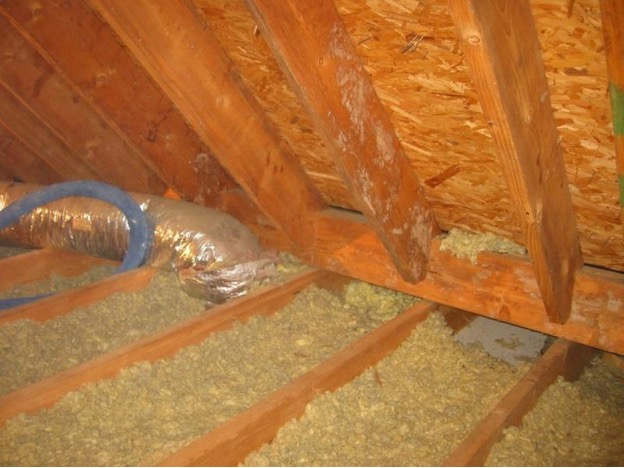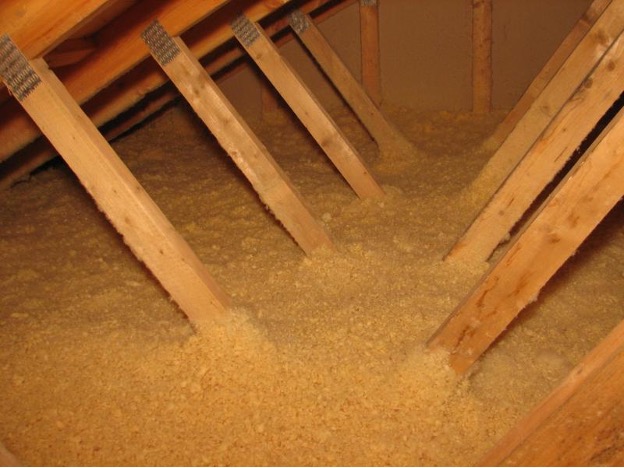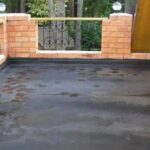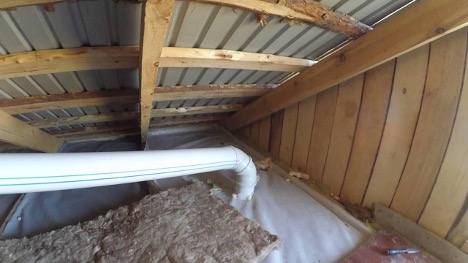Insulation of clay with sawdust on the ceiling of a bathhouse: what proportions, how to insulate
Using clay with sawdust as insulation is an environmentally friendly and effective way to ensure comfort in the bathhouse. This material has good thermal insulation properties and the ability to “breathe,” which is especially important for rooms with high humidity. In addition, sawdust clay is an affordable and inexpensive solution that you can make yourself.

The content of the article
- Determining the proportions of clay and sawdust for ceiling insulation
- The process of insulating the ceiling in a bathhouse with clay and sawdust
- Clay with sawdust as insulation for the ceiling: nuances of use
- Features of wall insulation with clay and sawdust
- Technique for plastering walls with clay and sawdust
- Making insulation from clay and sawdust: a step-by-step guide
- Conclusion
Determining the proportions of clay and sawdust for ceiling insulation
Before starting work, it is important to correctly determine the proportions of clay and sawdust for insulating the ceiling. Typically a ratio of 1:1 or 1:2 (clay:sawdust) is recommended depending on the desired density and thermal insulation properties. A higher sawdust content will make the mixture lighter and more porous, which will improve insulation but may reduce strength.
The process of insulating the ceiling in a bathhouse with clay and sawdust
To insulate the ceiling in a bathhouse with clay and sawdust, you will need to perform the following steps:
- Mix the clay and sawdust thoroughly in predetermined proportions.
- Add water until you obtain a homogeneous paste.
- Apply the mixture to the ceiling in an even layer using a spatula or your hands.
It is important to ensure good adhesion of the mixture to the ceiling surface to avoid it falling off in the future.
Clay with sawdust as insulation for the ceiling: nuances of use
Using a mixture of clay and sawdust as insulation on the ceiling has a number of nuances that must be taken into account to ensure the durability and efficiency of insulation. It is important to pay attention to the quality of the clay: it must be free of impurities and stones to ensure uniform adhesion to sawdust. In addition, the correct ratio of components is key - too much clay will make the mixture heavy and less insulating, while too much sawdust can lead to deterioration in the strength of the insulation. Before applying the mixture to the ceiling, ensure that the surface is thoroughly cleaned and dry to ensure the best adhesion and to avoid subsequent crumbling.
It is also important to consider the weight of the finished mixture, especially if the bathhouse ceiling is made of less durable materials. In such cases, it is recommended to use a lighter mixture with an increased sawdust content. This will help prevent excessive stress on the ceiling structures. After applying the mixture to the ceiling, you need to give it enough time to dry completely, which may take several days depending on the temperature and humidity in the room. Correctly performed insulation with clay and sawdust will not only improve the thermal insulation properties of your bathhouse, but will also give it a unique, natural look.

Features of wall insulation with clay and sawdust
Insulating walls with clay and sawdust differs from insulating ceilings, since walls are usually subject to less stress.Here you can use a lighter mixture with more sawdust, which will improve the thermal insulation properties without a significant increase in weight.
Technique for plastering walls with clay and sawdust
Plastering walls with clay and sawdust is a traditional and environmentally friendly finishing method that not only insulates the room, but also gives it a unique appearance. To achieve optimal results, it is important to follow the correct application technique.
The first step is preparing the walls. The surface must be clean, dry and free of dirt or dust. If there is old paint or plaster on the walls, it must be removed to improve the adhesion of the new layer. Before applying the mixture, it is recommended to moisten the walls to prevent the clay from drying out too quickly.
The next stage is preparing the mixture. The ideal ratio of clay to sawdust depends on the desired density and insulating properties, but usually ranges from 1:1 to 1:3. The mixture should be thick enough not to run off the wall, but at the same time pliable for ease of application. After mixing the clay and sawdust with water until the desired consistency is achieved, the mixture is left for some time to “ripen,” which improves its properties.
Applying the mixture to the wall is done using a spatula or trowel, starting from the bottom of the wall and gradually moving up. The thickness of the layer is usually about 2-3 cm, but can vary depending on insulation needs and the condition of the wall. After applying the plaster, it is important to spread it evenly over the surface to achieve a smooth and even finish.
The final stage is drying the plaster.This is a lengthy process that can take from several days to a week, depending on the conditions in the room. It is important to avoid direct sunlight and strong drafts during drying to prevent cracking and distortion. After complete drying, the plaster will gain strength and become an excellent basis for both decorative finishing and painting.
The use of clay plaster with sawdust not only provides wall insulation, but also creates a unique, “breathable” surface that helps create a healthy and comfortable microclimate in the bathhouse.
Making insulation from clay and sawdust: a step-by-step guide
To make your own insulation from clay and sawdust you will need:
- clay;
- sawdust;
- water.
Follow these steps:
- Mix clay with sawdust in the required proportions.
- Gradually add water until you get a paste.
- Mix thoroughly to avoid lumps.
This mixture is ready for use as an effective and natural insulation material.
Conclusion
Using a mixture of clay and sawdust to insulate a bathhouse is an economical and environmentally friendly way. This not only improves the thermal insulation properties of the bath, but also creates a unique, natural interior. By observing the correct proportions and application technique, you can effectively insulate the ceiling and walls of the bathhouse, ensuring comfort and coziness for long-term use.





